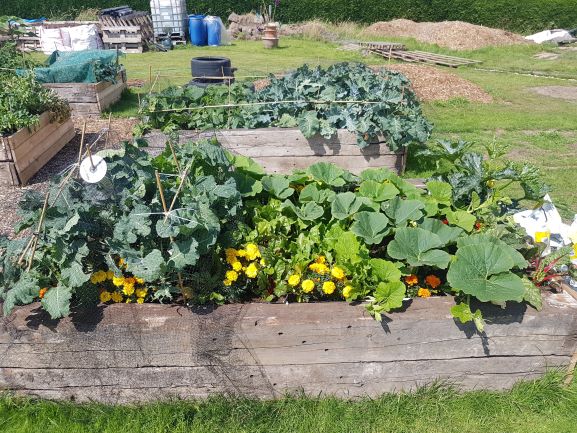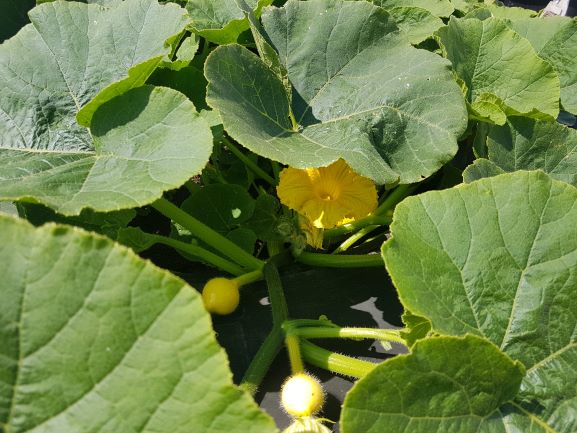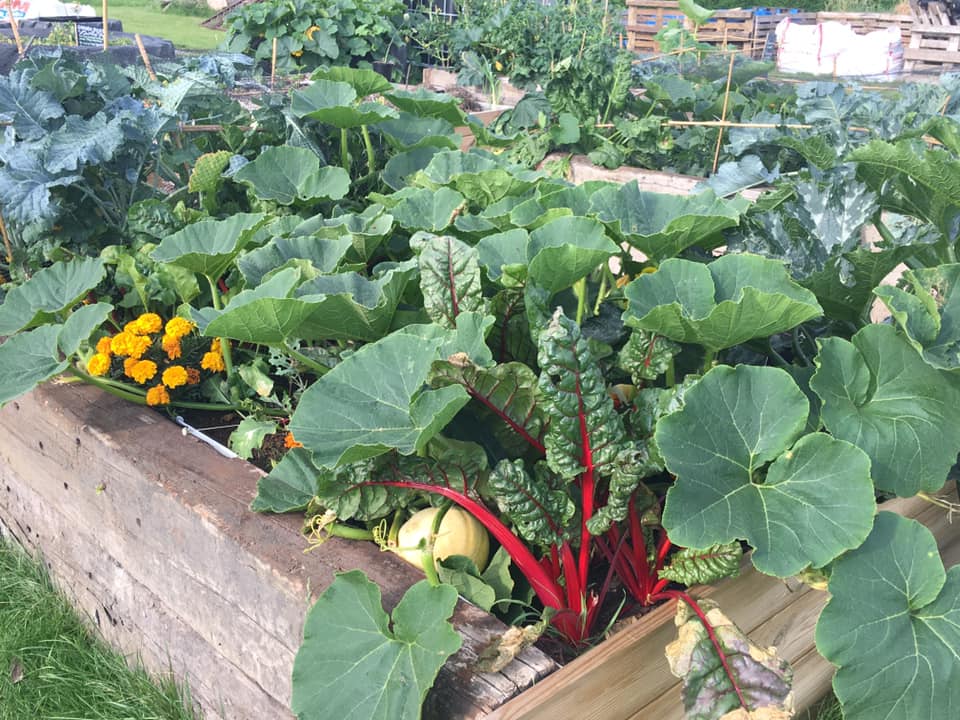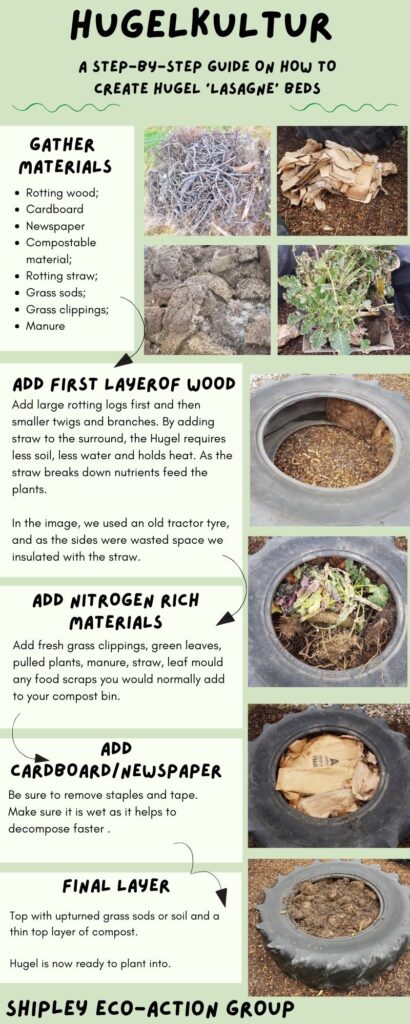What is Hugelkultur and how to make a Hugel
Hugelkultur, pronounced Hoo-gul-culture, means hill culture or hill mound. It is an organic method of gardening often seen in Permaculture designs.
Hugelkultur beds or mounds are essentially no-dig beds but with a difference. Due to the way they are made, as everything decomposes down, you are left with a nutrient rich soil, which is excellent at holding in moisture, building fertility, maximising surface volume and are versatile spaces for growing fruit, vegetables and herbs.
Traditional Hugelkultur involves creating a mound made up from layers of rotting logs, branches, twigs, leaves, grass cuttings, straw, cardboard, newspaper, manure, compost or whatever biomass you have available. Top with soil and plant your veggies straight into it. This is often referred to as ‘lasagne gardening’ or ‘sheet mulching’.
First of all you will need to decide whether you want to create a traditional mound, in which case we recommend you dig out a trench for the largest logs to sit in and layer it up from there. Whichever option you decide on, the first layer will always be your largest logs, followed by branches and then smaller twigs.
Ideally your next layer on top of the woody material should be your nitrogen-rich material, to kick start the composting process. Use fresh grass cuttings, leaves, leaf mould, straw or seaweed. You can use what you have available to you, it is not necessary to use everything listed here.
The next layers should be your compostable food waste and pulled plants, followed by wet cardboard, newspaper (all staples and tape removed), rotting straw and topped with soil. Your bed is now ready to be planted.
If you are making your Hugel on a grass lawn, it is advisable to remove the grass sods first. You can then use the upturned grass sods as the penultimate layer in your bed, topped with a small amount of compost or top soil.
What to consider before getting started
What type of materials do you have available right now? Do you need to source anything?
Do you want to make a traditional Hugel mound or a raised bed?
Where will your Hugel be situated? Remember the need for sunlight for good growing conditions?
What soil conditions do you have? If you have poor soil, using straw bales as a surround for the bed, are excellent as it means you need less soil, less water, it holds the heat and as the straw breaks down nutrients feed the plants.
Over time Hugels will sink as the woody and organic matter slowly decomposes and the spaces between the larger logs and branches are filled with smaller material and worms! Every year you will need to add more organic layers, such as compost and manure.
At Shipley Woodside Community Garden, one of the first things we did when we acquired the site in 2019, was to build our Hugel raised beds using donated railway sleepers. As the beds are quite high at wheelchair height, we simply covered the grass with cardboard and started layering with rotting logs, branches and twigs, cardboard, newspaper, straw, grass cuttings, upturned grass sods taken from other areas we had excavated in the garden and a small amount of compost on top. We used the same method in 2 donated tractor tyres lining the rim with straw to help insulate, retain moisture and add nutrients as it decomposes.
It is fair to say that some of the volunteers were sceptical about how well we could grow in these, but wow the vegetables absolutely thrived!


Squash growing in the tractor tyre 
So why should you give Hugelkultur a try?
- The gradual decay of wood is a consistent source of long-term nutrients for the plants. The decomposing wood also generates heat which could help extend the growing season.
- Soil aeration increases as those branches and logs break down, which means the soil is rich, fertile and full of healthy life. Without an adequate exchange of water and oxygen within the spaces between soil particles, microbes and organisms that live in the soil and need oxygen to survive will suffer, and consequently so will your plants.
- The logs and branches act like a sponge. Rainwater is stored and then released during drier times. Actually you may never need to water your bed again after the first year (except during long term droughts).
- Done correctly, your bed should be no-dig.
- Hugels are a fantastic organic and sustainable way of using garden waste to build your own healthy soil, without needing to buy in tonnes of compost and top soil.
